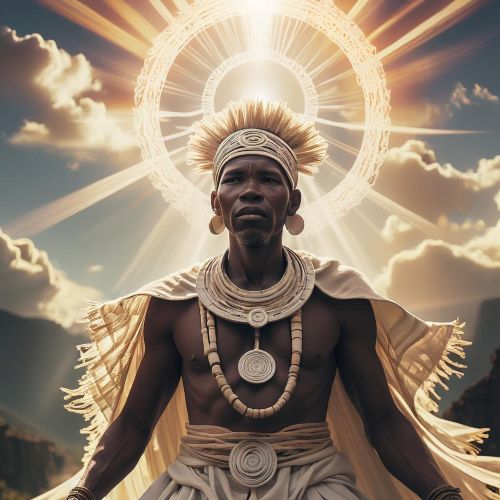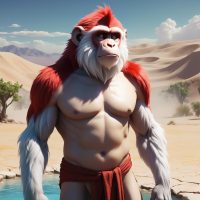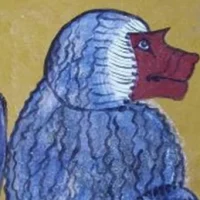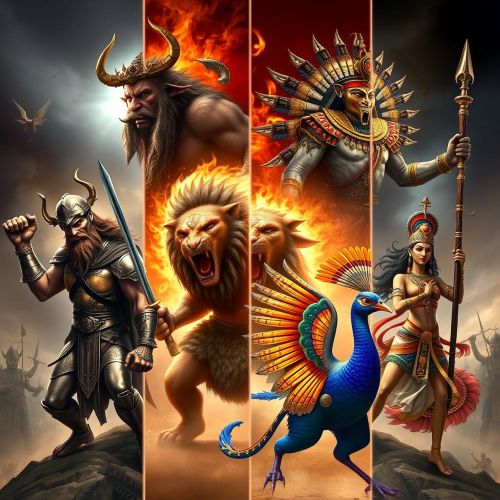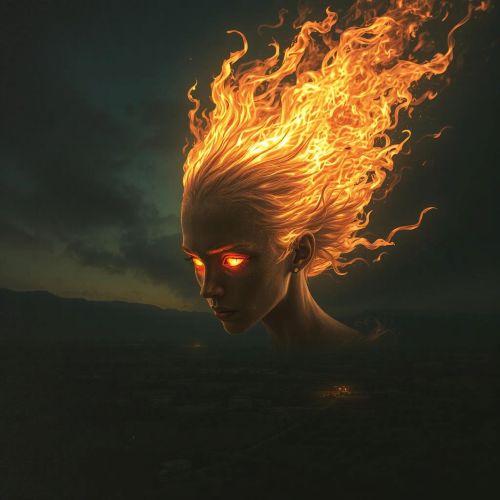Elas Molan : Guardian of Hot Springs
Listen
At a glance
| Description | |
|---|---|
| Origin | Berber Mythology |
| Classification | Animals |
| Family Members | N/A |
| Region | Niger |
| Associated With | Hot Springs |
Elas Molan
Introduction
Nestled within the expanse of North Africa’s deserts lies a collection of captivating myths and legends, cherished by the nomadic Berber tribes who have traversed the region for ages. Among these tales, one figure emerges as particularly intriguing: Elas Molan, the revered guardian of sacred hot springs in Berber mythology, notably within the Tuareg Berber tradition. The Berbers, self-identified as “Imazighen” or “Free Men,” inhabit a vast territory spanning the Western Sahara Desert and Sahel, with their folklore deeply intertwined with their cultural heritage. Within this intricate tapestry, Elas Molan holds a distinct place, embodying the essence of Berber beliefs and traditions.
Physical Traits
Elas Molan, a towering primate of legendary proportions, is renowned for his awe-inspiring presence. His reddish fur, said to be impervious to any weapon, symbolizes not only his imposing stature but also his formidable strength and invulnerability. Standing larger than any earthly monkey, Elas Molan’s appearance captivates with its striking duality. His upper body is enveloped in a coat of shimmering red fur, evoking the intense heat of the desert sun, while his lower half is draped in white fur, reminiscent of the refreshing waters he safeguards with unwavering vigilance.
Family
Although specifics regarding Elas Molan’s family remain elusive in existing sources, a prevailing belief suggests that Elas Molan was once a human who underwent a transformative metamorphosis into an animal form. Berber mythology, while not explicit about Elas Molan’s familial connections, hints at the possibility of him being a solitary figure. The expansive desert landscape and the pivotal role he plays as a guardian lend weight to this interpretation. Nevertheless, alternate perspectives propose the notion of Elas Molan belonging to a broader mythical lineage of primates, with the intriguing possibility of him being the last of his kind in the region.
Other names
The name “Elas Molan” carries profound meaning within Berber mythology. “Elas” signifies “giant” or “strong” in the Berber language, emphasizing his colossal stature and imposing demeanor. As for “Molan,” its significance offers two potential interpretations. One suggests its origin from “aman,” denoting “water,” aligning perfectly with Elas Molan’s association with the life-sustaining hot springs. Alternatively, “Molan” may stem from “amlan,” translating to “protector” or “guardian,” underscoring his pivotal role as the vigilant defender of these sacred waters. Throughout Berber mythology, Elas Molan remains predominantly recognized by this name, with no alternative appellations documented in available sources.
Powers and Abilities
Elas Molan transcends the mere stature of a giant monkey, as his formidable powers firmly establish him as a vigilant guardian. Legends portray him as impervious to conventional weaponry, with spears and swords futile against his thick fur and robust physique. This invulnerability serves him well in repelling potential threats to the sanctity of the hot springs, ensuring their purity and accessibility to those in need of their rejuvenating properties.
Moreover, Elas Molan may possess heightened senses attuned to his surroundings. The expansive desert terrain demands acute observation skills, and whispers of Elas Molan’s ability to detect travelers from afar linger in tales. This heightened awareness enables him to discern the intentions of approaching individuals, permitting only those with peaceful aims to access the sacred waters under his watchful gaze.
Hints also suggest that Elas Molan harbors the ability to communicate with humans, although the full extent of this capacity remains shrouded in mystery. It is speculated that he may convey warnings through gestures or resounding roars, or perhaps he possesses a rudimentary form of telepathic communion. This enigmatic ability to bridge the divide between mortals and the spiritual realm adds layers of fascination to his character.
Renowned as the guardian of Tafédek, a cherished hot water spring in Niger, Elas Molan’s primary duty is safeguarding its sanctity, particularly for the welfare of children. His reddish fur, impervious to the touch of weapons, serves as a testament to his formidable prowess, enhancing his reputation as an indomitable protector.
Modern Day Influence
Though the direct impact of Elas Molan on contemporary society lacks explicit documentation, the enduring richness of Berber mythology remains a subject of fascination and scholarly inquiry. Within the vast tapestry of Berber folklore, characters such as Elas Molan offer profound insights into the cultural and historical milieu of the Berber people, serving as wellsprings of inspiration across various artistic mediums and popular culture. Even in the modern era, Elas Molan retains a significant presence within Berber culture, symbolizing reverence for nature and the delicate equilibrium of desert ecosystems. The sacred hot springs he safeguards remain revered for their therapeutic qualities, drawing Berber communities seeking both physical rejuvenation and spiritual communion.
Moreover, Elas Molan’s narrative resonates with universal themes that transcend cultural boundaries. As a guardian spirit protecting a vital resource amidst a harsh environment, he embodies a archetype found in diverse mythologies worldwide, akin to tree spirits or water nymphs safeguarding natural sanctuaries. His tale underscores the imperative of honoring nature’s potency, acknowledging the desert’s dual nature as both a formidable force and a source of sustenance.
Despite the limited documented information about Elas Molan, his story endures through oral traditions and artistic expressions. Depictions of his likeness may adorn Berber rugs and woven tapestries, serving as visual reminders of the enigmatic giant monkey. Meanwhile, modern artists might reinterpret his legend through diverse mediums such as paintings, sculptures, or cinematic adaptations, introducing Elas Molan to broader audiences and perpetuating his legacy for generations to come.
Related Images
Frequently Asked Questions
What is lorem Ipsum?
I am text block. Click edit button to change this text. Lorem ipsum dolor sit amet, consectetur adipiscing elit. Ut elit tellus, luctus nec ullamcorper mattis, pulvinar dapibus leo.
What is lorem Ipsum?
I am text block. Click edit button to change this text. Lorem ipsum dolor sit amet, consectetur adipiscing elit. Ut elit tellus, luctus nec ullamcorper mattis, pulvinar dapibus leo.
What is lorem Ipsum?
I am text block. Click edit button to change this text. Lorem ipsum dolor sit amet, consectetur adipiscing elit. Ut elit tellus, luctus nec ullamcorper mattis, pulvinar dapibus leo.
What is lorem Ipsum?
I am text block. Click edit button to change this text. Lorem ipsum dolor sit amet, consectetur adipiscing elit. Ut elit tellus, luctus nec ullamcorper mattis, pulvinar dapibus leo.
What is lorem Ipsum?
I am text block. Click edit button to change this text. Lorem ipsum dolor sit amet, consectetur adipiscing elit. Ut elit tellus, luctus nec ullamcorper mattis, pulvinar dapibus leo.

